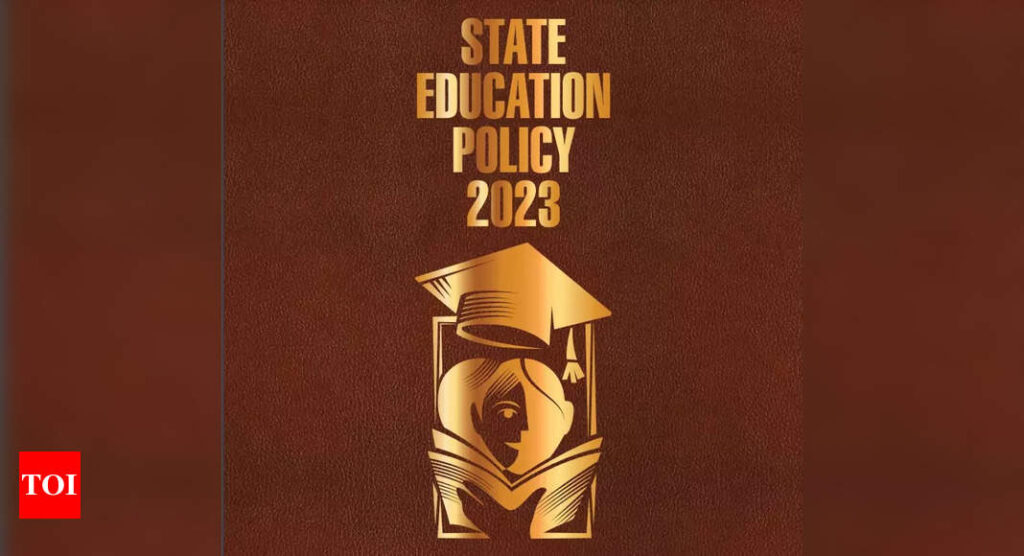WB Education Policy 2023: The West Bengal Higher Education Department has revamped its education system starting from pre-primary to higher education level in the State of West Bengal. The new State Education Policy (SEP) is aimed at ensuring a higher standard of education for all students, with a particular focus on marginalized, disadvantaged, and under-represented groups.
The State Government constituted an expert committee comprising eminent educationists on April 07, 2022. The Committee submitted its recommendation to the State Government after due deliberation with stakeholders.
West Bengal New Education Policy 2023: Key Highlights
Education Structure: At present, the structure of school education in West Bengal follows a 5+4+2+2 pattern. It includes one year of pre-primary and four years of primary till class 4, The students move through four years of upper primary, two years of secondary, and two years of higher secondary. The only change suggested in the structure is the inclusion of the first two years of early years’ education at an Anganwadi centre.
Early Childhood Care and Education: There are around 1.2 lakh Anganwadi Centres (AWC) catering to over 82 lakh children (0-6 years). The curriculum for the children of AWC will be prepared by the Expert Committee on School Education for a seamless transition from pre-primary to primary school level. The Committee also recommends developing a unique identity card with an embedded memory chip that contains basic academic records from age 3 onwards till class XII.
Download: West Bengal New Education Policy 2023
Primary Education: The Committee has recommended introducing Bangla as a subject from Class I to Class XII for students of other mediums of instruction.
3-Language Formula: The three-language formula will be implemented in classes 5 to 8 depending on infrastructure and resources. The primary language of instruction will align with the school’s medium, with Bengali for Bangla-medium schools, English for English-medium schools, Urdu for Urdu-medium schools, and Hindi for Hindi-medium schools, as applicable. The second language can either be English (in schools not primarily using English) or any language distinct from the first language. Additionally, the third language can be any language other than the first and second languages.
Secondary Education: The Committee recommends the Semester System be introduced for an enhanced system of formative assessment from Class VIII onwards in a phased manner over the next three years.
Higher Secondary Education: Students should be engaged in internship programs and projects during summer vacation related to the subjects of their choice. Tie-ups with media houses, publishing houses, and corporate firms may be made in this regard.
The State Government constituted an expert committee comprising eminent educationists on April 07, 2022. The Committee submitted its recommendation to the State Government after due deliberation with stakeholders.
West Bengal New Education Policy 2023: Key Highlights
Education Structure: At present, the structure of school education in West Bengal follows a 5+4+2+2 pattern. It includes one year of pre-primary and four years of primary till class 4, The students move through four years of upper primary, two years of secondary, and two years of higher secondary. The only change suggested in the structure is the inclusion of the first two years of early years’ education at an Anganwadi centre.
Early Childhood Care and Education: There are around 1.2 lakh Anganwadi Centres (AWC) catering to over 82 lakh children (0-6 years). The curriculum for the children of AWC will be prepared by the Expert Committee on School Education for a seamless transition from pre-primary to primary school level. The Committee also recommends developing a unique identity card with an embedded memory chip that contains basic academic records from age 3 onwards till class XII.
Download: West Bengal New Education Policy 2023
Primary Education: The Committee has recommended introducing Bangla as a subject from Class I to Class XII for students of other mediums of instruction.
3-Language Formula: The three-language formula will be implemented in classes 5 to 8 depending on infrastructure and resources. The primary language of instruction will align with the school’s medium, with Bengali for Bangla-medium schools, English for English-medium schools, Urdu for Urdu-medium schools, and Hindi for Hindi-medium schools, as applicable. The second language can either be English (in schools not primarily using English) or any language distinct from the first language. Additionally, the third language can be any language other than the first and second languages.
Secondary Education: The Committee recommends the Semester System be introduced for an enhanced system of formative assessment from Class VIII onwards in a phased manner over the next three years.
Higher Secondary Education: Students should be engaged in internship programs and projects during summer vacation related to the subjects of their choice. Tie-ups with media houses, publishing houses, and corporate firms may be made in this regard.

